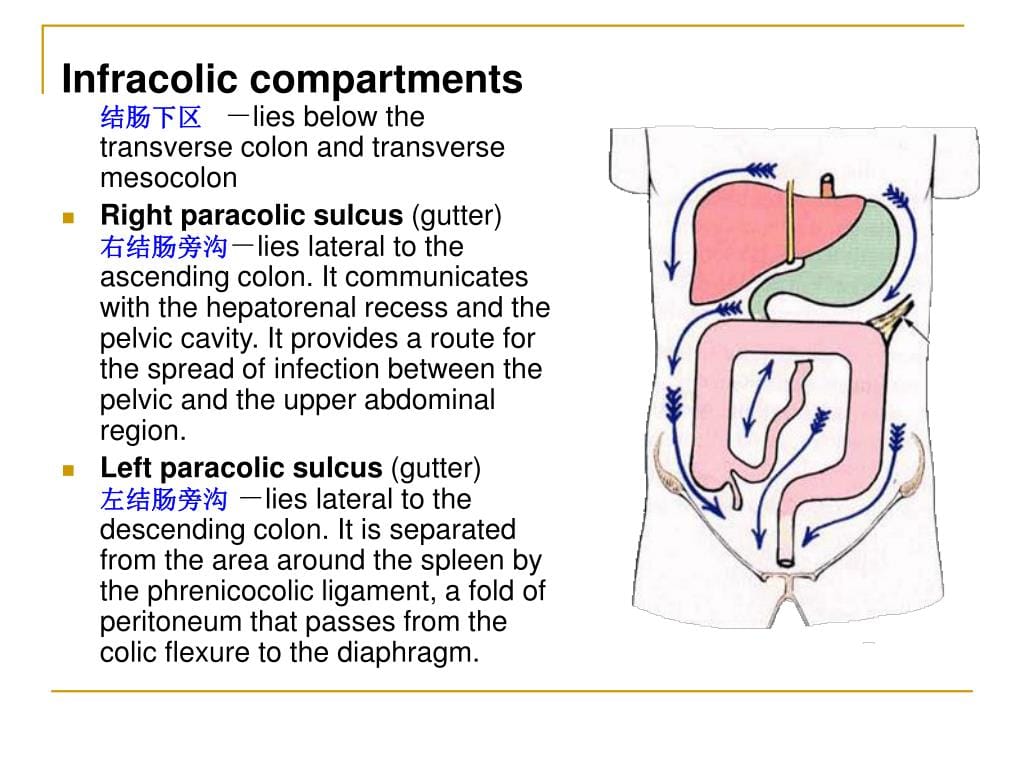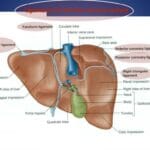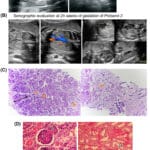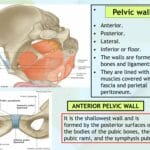Exploring the Abdominal Landscape: Paracolic Gutters
Imagine your abdomen not as a simple cavity, but as a complex landscape with hidden valleys and pathways. Among these are the paracolic gutters, crucial channels that play a significant role in abdominal health. Understanding their anatomy and function is vital for both medical professionals and those seeking to understand their own bodies. These “gutters” are more than just anatomical features; they influence how infections spread, how cancer might metastasize, and how fluid accumulates within the abdomen. Let’s delve into the world of these often-overlooked but essential structures.
What are Paracolic Gutters?
Paracolic gutters (also known as paracolic sulci or recesses) are peritoneal recesses located on the posterior abdominal wall, acting as channels for fluid movement around the ascending and descending colon. They are essentially spaces or channels situated between the colon and the abdominal wall, formed by folds in the peritoneum, the membrane that lines the abdominal cavity. These folds create a series of channels that act like a drainage system, directing the flow of peritoneal fluid, a lubricating liquid that prevents friction between abdominal organs.
There are two main paracolic gutters:
- Right Lateral Paracolic Gutter: This gutter runs along the right side of the ascending colon, extending from the hepatic flexure (where the ascending colon turns to become the transverse colon) down towards the cecum and into the pelvis. It is significantly larger than the left paracolic gutter.
- Left Lateral (Medial) Paracolic Gutter: This gutter lies along the left side of the descending colon, extending from the splenic flexure (where the transverse colon becomes the descending colon) downwards. It’s smaller than the right and is partially blocked at the top by the phrenicocolic ligament. This ligament’s presence likely impacts how fluid flows on the left side compared to the more open right side. A less prominent right medial paracolic gutter can also be present, depending on individual anatomy.
Are you looking for a noncontingent reinforcement to maintain a constant behavior?
The Clinical Importance of Paracolic Gutters
The paracolic gutters’ function extends beyond simply channeling fluid. Their unique structure influences various abdominal processes, both normal and pathological.
How Infections and Disease Spread
These gutters can unfortunately act as highways for the spread of infection. In appendicitis, for example, infected fluid from the appendix can travel up the right paracolic gutter, potentially leading to peritonitis (infection of the abdominal lining) or abscesses. Similarly, in diverticulitis (inflammation of small pouches in the colon), the left paracolic gutter can facilitate the spread of infection, though the phrenicocolic ligament may offer some containment.
The gutters’ role in cancer metastasis is also a critical concern. Cancer cells can spread through the lymphatic channels within the gutters, similar to seeds carried by the wind. Understanding how these channels contribute to metastasis is crucial for treatment planning.
The paracolic gutters also play a significant role in managing ascites – a condition where fluid builds up in the abdomen. They influence where and how this fluid accumulates, crucial information for procedures like paracentesis (draining excess fluid). For surgeons, the gutters are key landmarks. Their precise location guides surgical navigation during procedures like right hemicolectomy or sigmoid colon resection, minimizing the risk of complications and optimizing drainage.
Ongoing research continues to explore the complexities of the paracolic gutters. Some studies suggest that their shape and size may vary between individuals, potentially impacting a person’s susceptibility to certain conditions. Other research focuses on refining surgical techniques that leverage the gutters’ natural drainage properties.
Or perhaps you would like to learn more about odontologists to see if that is a career path you wish to pursue?
A Deeper Dive into Paracolic Gutters: Medical Significance
So, what exactly constitutes a “gutter” in medical terminology, specifically within the abdomen? Visualize the colon as a gently sloped roof inside your abdomen. Just as a house needs gutters to channel rainwater, your body has its own internal drainage system – the paracolic gutters. These aren’t physical gutters like those on your house, but rather spaces that help direct the flow of peritoneal fluid, preventing its accumulation and potential complications.
These gutters play a vital role in containing infections within the abdomen. For instance, in appendicitis, the gutters help channel pus and infectious fluids away from the appendix, slowing the spread of infection. This containment is crucial for preventing more widespread peritonitis. However, if the infection becomes overwhelming, these same gutters can become pathways for further spread, highlighting the complex nature of their role.
The right and left paracolic gutters have notable differences. The right gutter, being larger, can hold a greater volume of fluid. This anatomical detail makes it more clinically significant. For instance, it’s a more likely pathway for fluid spread from infections like appendicitis. This size difference is a critical factor doctors consider when diagnosing and treating abdominal conditions. While generally beneficial, the gutters can sometimes contribute to the spread of infection if it’s severe or left untreated.
Ongoing research delves further into the intricacies of these internal drainage systems. Studies explore how the gutters influence infection spread and how their structure might vary between individuals. Some experts believe that variations in the gutters’ size and shape may even influence an individual’s vulnerability to specific abdominal problems.
Current Research and Future Directions
While current understanding provides a solid foundation, research continues to explore the nuances of paracolic gutters. Scientists are currently exploring how variations in these gutters might influence an individual’s propensity to certain abdominal conditions. Further study into these seemingly minor details holds the potential to unlock a deeper understanding of abdominal health and improve the diagnosis and treatment of related conditions.
Key Takeaways
- Definition: Paracolic gutters are peritoneal spaces between the colon and the abdominal wall, serving as channels for peritoneal fluid.
- Types: Two primary gutters exist – right lateral (larger) and left lateral (smaller, partially obstructed by the phrenicocolic ligament).
- Function: Facilitate peritoneal fluid flow, influencing both normal physiology and the spread of pathology (infection, cancer cells, ascites).
- Clinical Significance: Essential in the diagnosis and management of intra-abdominal conditions. Knowledge of their anatomy is critical for surgeons performing abdominal procedures. Imaging techniques like CT and ultrasound visualize these gutters, aiding in diagnosis.
- Ongoing Research: Exploration of individual anatomical differences and their impact on disease susceptibility. Development of refined surgical techniques leveraging the gutters’ drainage capabilities.
This information is for educational purposes only and should not be considered medical advice. If you have any health concerns, please consult a healthcare professional.
- China II Review: Delicious Food & Speedy Service - April 17, 2025
- Understand Virginia’s Flag: History & Debate - April 17, 2025
- Explore Long Island’s Map: Unique Regions & Insights - April 17, 2025
















